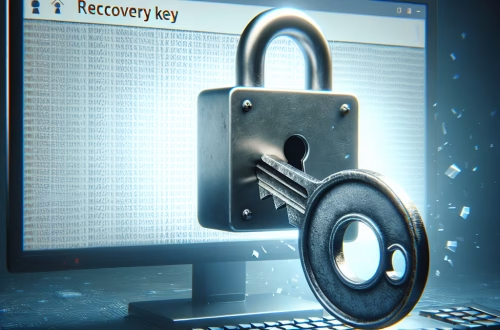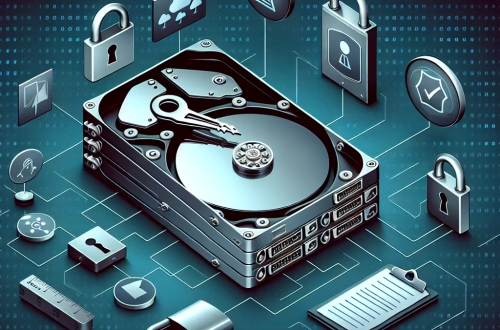BitLocker for Encrypted Backups
Summary:
BitLocker for encrypted backups is a Windows security feature that ensures backup files stored on external drives or network locations remain protected via full-disk encryption. BitLocker encrypts data using the AES algorithm (128-bit or 256-bit) to prevent unauthorized access, even if the storage device is lost or stolen. Common triggers for BitLocker-encrypted backups include system-enforced security policies, compliance requirements, or user-configured encryption settings. This mechanism is particularly crucial for safeguarding sensitive data in business environments, remote work scenarios, and regulated industries.
What This Means for You:
- Immediate Impact: Encryption means backups are inaccessible without proper authentication (password, TPM, or recovery key), which can delay recovery if credentials are lost.
- Data Accessibility & Security: Ensure secure storage of recovery keys—preferably in multiple locations (Microsoft account, printed copy, or organizational vault).
- System Functionality & Recovery: Test backup decryption periodically to avoid surprises during critical restore operations.
- Future Outlook & Prevention Warning: Hardware failures or Windows updates may trigger BitLocker recovery mode; always verify system integrity before updating.
Explained: BitLocker for Encrypted Backups
Solution 1: Enabling BitLocker for External Backup Drives
To encrypt an external drive for backups, open File Explorer, right-click the target drive, and select Turn on BitLocker. Choose between password protection or smart card authentication, then select Encrypt entire drive for maximum security. Back up the recovery key to a file or Microsoft account. Use the command manage-bde -on X: -pw (replace X: with the drive letter) for PowerShell-based encryption. This is ideal for secure off-site backups but may slow write speeds by 5–15% due to encryption overhead.
Solution 2: Recovering Data Without a Password
If the password is lost, use the 48-digit BitLocker recovery key. Boot the system, enter recovery mode, and input the key when prompted. For offline access, mount the drive via manage-bde -unlock X: -rk * in PowerShell (replace X: with the drive letter and * with the key path). Note that brute-forcing is impossible due to AES encryption, making key storage non-negotiable. Enterprise users may retrieve keys via Active Directory if configured.
Solution 3: Handling TPM-Related Access Issues
TPM (Trusted Platform Module) failures—common after BIOS updates—may trigger BitLocker recovery mode. Reset the TPM via BIOS settings (e.g., Security > TPM Clear) and suspend/resume BitLocker using manage-bde -protectors -disable C: before updates. For legacy systems without TPM 2.0, enable Group Policy (gpedit.msc > Computer Configuration > Administrative Templates > Windows Components > BitLocker Drive Encryption) to allow USB-based startup keys.
Solution 4: Migrating Encrypted Backups Across Systems
To transfer encrypted backups to a new PC, decrypt the drive on the source system first (manage-bde -off X:), then re-encrypt on the target. Alternatively, export the drive’s certificate via manage-bde -protectors -export C: -tp -path C:\cert.cer and import it on the new device. Network backups (e.g., NAS) require BitLocker Network Unlock for seamless access, configured via DHCP and WDS roles.
People Also Ask About:
- Can BitLocker encrypt cloud backups? No—it only encrypts local drives, but cloud services like OneDrive use their own encryption.
- Does BitLocker slow down backups? Minimal impact (typically
- Is BitLocker secure against ransomware? Yes, if the drive is locked or the system is powered off when attacked.
- How to verify encryption status? Run
manage-bde -statusin PowerShell or check the drive’s lock icon in File Explorer.
Other Resources:
- Microsoft Docs: BitLocker Overview
- NIST SP 800-111: Guideline for Storage Encryption
Suggested Protections:
- Store recovery keys in Azure Active Directory for enterprise environments.
- Enable pre-boot authentication for laptops to deter physical attacks.
- Monitor encryption events via Windows Event Log (ID 796, 845).
- Use hardware-encrypted SSDs (e.g., Samsung T7 Shield) for secondary protection.
Expert Opinion:
BitLocker remains the gold standard for Windows backup encryption, but its reliance on TPM and Microsoft’s ecosystem introduces single points of failure. Organizations should pair it with hardware-based key storage (HSMs) for compliance with NIST SP 800-171. Future iterations may integrate post-quantum cryptography to counter emerging threats.
Related Key Terms:
- BitLocker Recovery Key
- TPM (Trusted Platform Module)
- AES-256 Encryption
- Active Directory Key Backup
- BitLocker Network Unlock
*Featured image sourced by DallE-3





